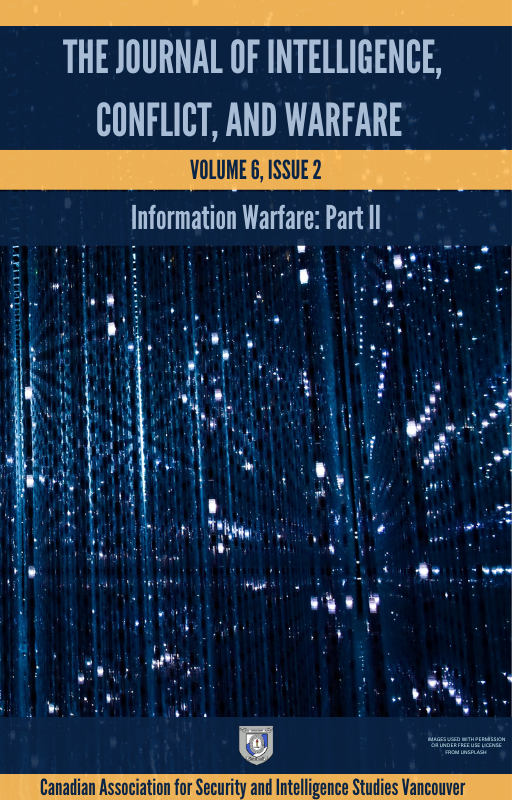Vol. 6 No. 2 (2023)
The world is in a state of flux. It is not business as usual, but we proceed as though it were. We arguably have the same military apparatus; the same weapons being prepared for the same use: to engage kinetically with an opposing force on a field of battle. We assume that democracy is a constant and a norm. However, right before our eyes, the structures and control mechanisms, international agreements, and alliances designed to uphold peace and peaceful prosperity are breaking. Wars don’t start with a bang—they build slowly and inevitably, and we are already in the midst of a war.
There are many ways to define war. Hard war—we are fluent, drilled, and funded; this type we are familiar with and prepared for. Soft war, fought to damage the human and critical infrastructure of a society, carries the intention to cause polarization and civic discord and promote soft harm within previously peaceful societies. When soft war is viewed as a deliberate undertaking, the weapons used can be meme missiles and word bombs whose intention is the explosion and destruction of human infrastructure upon which modern society is built. In a soft war, we don’t maim—we meme and we code. Hybrid war requires a focus on both hard and soft war equally, but soft war harm is infinitely greater than conventional harm because in conventional war the victims are combatants. In soft war, combatants are the societies we come from. It targets you, me, and everyone—and everything we hold dear.
But that is not all.
Total war constitutes a threat to the very nature of the liberal system. The target is the international regime and there are no non-combatants. It uses non-kinetic attacks to execute kinetic impacts which require kinetic responses that we are not able to defend against, as we are not aware of this invisible insecurity. The objective is to foster tension in the social contract and create anger, distrust, and normative and institutional degradation. Its target is everyone, and it impacts individual sovereignty and the structures of society in ways we cannot yet fathom and certainly are not responding to. It is driven by hegemonic change and its goal is regime change. This is war in the post-Liberal era and the promotion of all things illiberal: the rules of war are just one of the casualties.
If we stay in the same mental paradigm, assume war means war as we know it, assume that liberalism and democracy is the norm, we will miss the evolution of violence—in society and in the battlefield—and we will miss the changing of the guard to a post liberal/illiberal epoch defined by unlimited, unrestricted warfare. With no rules, no battlefield, no laws, and no limits, and one in which it is not the soldiers doing the fighting. We have already let our adversaries into the trenches: our keyboards, our homes, and our minds.
The articles and briefings included in this new issue of the Journal of Intelligence, Conflict, and Warfare explore strategies to secure societies in the face of a new threat environment. The topics range from the national to international, addressing issues of ideology, technology, borders, and innovation, exposing the interconnected nature therein. These articles and briefings reflect different areas of concern, but together they demonstrate the power of critical reasoning, rigorous research, and solutions-oriented thinking. This issue is also a reminder that understanding a specific security threat often depends on how well we understand a specific group or movement’s formation, evolution, leadership patterns, and culture; that Violent Transnational Social Movements (VTSMs) must be tracked; and the importance of a shifting information and intelligence landscape. As the scholarly debate about critical security issues continues to unfold, the Editorial board and I hope these critical explorations of security threats carry the discussion forward.
JICW Editor-in-Chief
Candyce Kelshall
